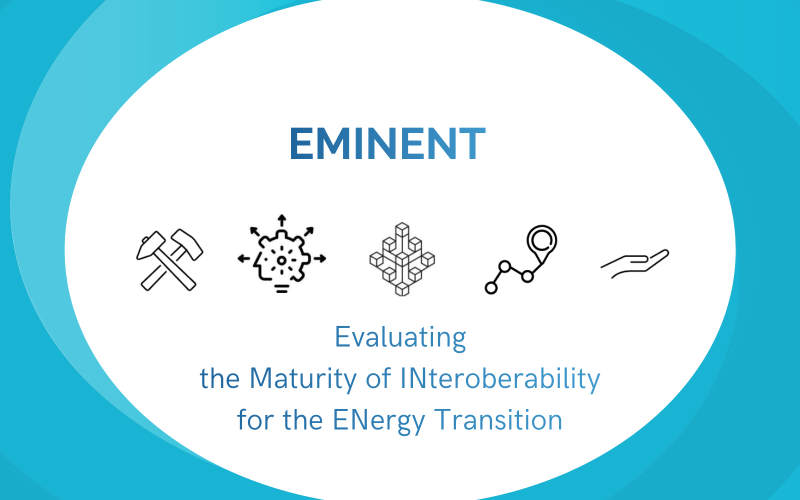The emerging Common European Energy Data Space - state of play and next steps
The Data Strategy and the EU Action plan on digitalising the energy system announced the creation of a Common European Energy Data Space (CEEDS). The Commission supports the deployment of the energy data space through the DIGITAL Work Programme 2023-2024. This workshop explored the policy background of the work on the CEEDS, the preparatory work done so far within Horizon Europe with special focus on the blueprint for the energy data space developed by the preparatory actions and the upcoming actions such as the recently published deployment action under the DIGITAL Europe programme. Audience learned the details of the existing and upcoming initiatives as well as to meet like-minded stakeholders who you could join forces for a successful deployment of the CEEDS.
Zoe de Linde (Deputy Head of Unit of DG CNECT.E.4, Internet of Things) opened the workshop by emphasizing the EU's commitment to driving both competitiveness and decarbonization through digitalization. She emphasised the critical role of the CEEDS in building sustainable and efficient energy systems across the Union, noting its position as a key deliverable of both the Data Strategy and the Digitalisation of Energy Action Plan. She stressed the importance of technical building blocks, governance frameworks, and interoperability in ensuring the success of this initiative. Finally, she highlighted the potential of advanced digital technologies, such as generative AI, to unlock new innovations, and the necessity of cross-sectoral collaboration to fully realize the potential of the data space.
Subsequently, Stavros Stamatoukos (Policy Officer at DG ENER.B5, Digitalisation, Competitiveness, Research & Innovation) presented the ongoing work towards the CEEDS. Concrete actions derive from the EU action plan on digitalising the energy system (DoEAP), as the establishment of the Smart Energy Expert Group, the creation of a digital twin with the TSOs and DSOs together with the support to National Regulatory Authorities and ACER in defining common smart grid indicators. The EU action plan for Grids aims to improve the long-term grid planning and visibility of the network needs fostering data exchange among various assets, while the revision of the EMD directive implements regulations for customer switching and demand response. Three relevant references have been indicated, which complement the presented activities, namely the EnTEC study on the energy data space, the ETIP SNET paper on the energy data space and the ongoing work under BRIDGE, WG on Data Management.
The Common European Energy Data Space Deployment Call of DIGITAL Europe programme has been presented by Svetoslav Mihaylov (Policy Officer at DG CNECT.E.4, Internet of Things). Main objectives are the establishment of a secure European energy data space in line with EU strategies, enabling access to data for innovative energy services, aligning with sustainability goals and promoting sector integration and create business opportunities as outlined in EU plans ('Fit for 55' package and RePowerEU plan). The expected activities require to launch the initial iteration of a unified CEEDS across a minimum of 10 Member States, implement and test at least five use cases (including at least two from the DoEAP, targeting key priorities like distributed energy resources, grid flexibility services, and intelligent electric vehicle charging) and adopt standardized reference architecture, building blocks and open standards like SAREF. The project will also rely on results from ongoing Horizon Europe projects. The call opened on 29th February and will be open until 29Th May 2024; one project is expected to be funded, with maximum grant amount equal to 8 M€.
Due to the direct connection among the presented DIGITAL EU call directly and the ongoing EU projects, the overview on the cluster of energy data spaces projects has been provided by Prof. Antonello Monti (institute director at RWTH Aachen University and group leader at Fraunhofer FIT). The energy data spaces cluster is formed by two layers. The inner layer includes six projects of the Horizon Europe programme: one Coordination and Support Action (int:net) and five Innovation Action projects (DATA CELLAR; EDDIE; Enershare; Omega-X; SYNERGIES). The outer layer includes additional energy projects, as stakeholders, which are related to data spaces (ODEON; BEGONIA; Hedge-IoT; InterStore; TwinEU). The cluster works towards the interoperability of the solutions implemented by the inner projects, by identifying, among others, the key building blocks, governance schemes and data sets; the concrete achievement of interoperability is performed via 4 System Use Cases (SUCs). In this regard, the position paper “Interoperability Framework in Energy Data Spaces” has been published. Moreover, five high-level Business Use Cases (BUCs) have been defined, whose operations are fostered by data space technologies, namely: (1) collective self-consumption and optimized sharing for energy communities, (2) residential home energy management integrating Distributed Energy Resources (DER) flexibility aggregation, (3) TSO-DSO coordination for flexibility, (4) electromobility, services roaming, load forecasting and schedule planning and (5) renewables O&M optimization and grid integration. These BUCs are part of the “Blueprint of the CEEDS” recently published, which also includes the general data space architecture that can enable the BUCs. This architecture aims to interconnect the existing data infrastructures, of legacy systems, with federated data spaces; at this scope, technical specifications and interoperability insights have been delivered.
The Blueprint of the CEEDS relies on the achievements of the Data Spaces Support Centre (DSSC), whose overview has been subsequently delivered by Sonia Jimenez (Director Data Space Technology at International Data Spaces Association – IDSA). Among the work delivered by DSSC it is worth to mention the Data Spaces Glossary, to support the common agreement on data space concepts in the different domains, and the DSSC Blueprint, which expands the building blocks initially defined by the OPEN DEI project (by deepening the business and organizational building blocks) as well as providing the specifications for the implementation of data space components. The work is performed with a strong collaboration with the stakeholders in the ecosystem, specifically with expert and thematic groups.
The second part of the workshop consisted of an interactive activity with the participants, to brainstorm and collect the inputs on various aspects associated with the presented DIGITAL EU call. Regarding the primary obstacles and challenges that need to be addressed, to unlock the implementation of the CEEDS, the observability at the grid level, especially at the DSOs level, emerged as a key aspect. Further inputs concerned the missing interoperability among data space connectors and vocabularies as well as the necessary involvement of scattered stakeholders while ensuring the respect of GDPR and governance regulations. The audience has also been asked to indicate concrete ideas and proposals for the DIGITAL EU call: high-level use cases, architectures, building blocks, references and implementation procedures. Among the various inputs, the OneNet connector and middleware have been identified as key elements on which the implementations shall be based, together with Digital Twins for operational integration between, DSOs, TSOs, local partners and other domains in energy different than electricity. An additional aspect is related to the choice of existing standards that are used in Europe such as IEC 61850, CIM, and CGMES; in fact, these are the semantic standards to be used as basis for interoperability between existing infrastructure to foster harmonized integration at EU level.
Please feel free to download the presentation slides here.




